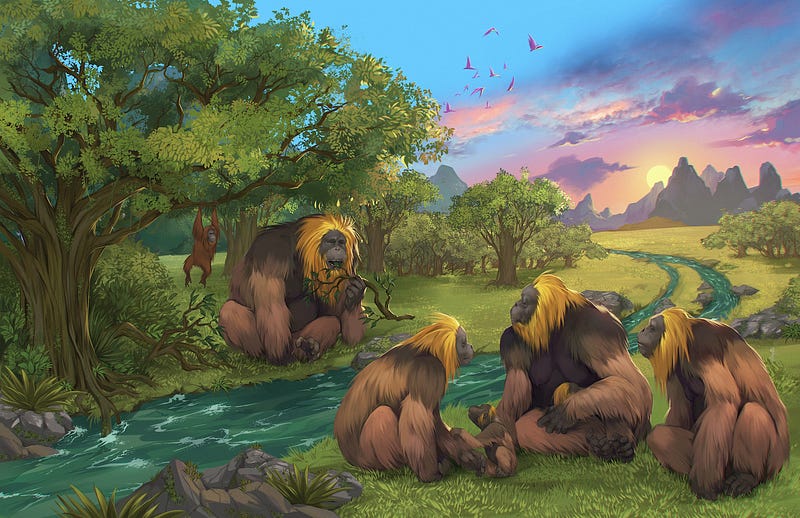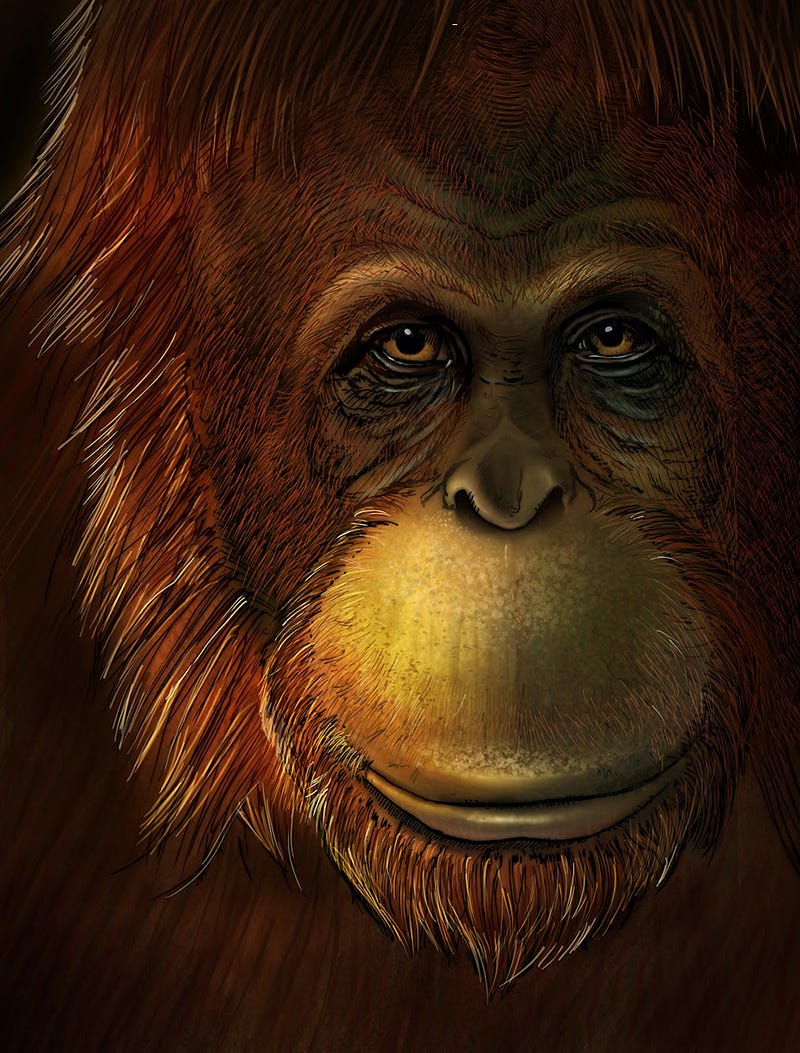The Enigmatic Gigantopithecus: Earth's Largest Primate
Written on
Chapter 1: Introduction to Gigantopithecus
Humans are relatively large among primates, yet there was one species that overshadowed us: Gigantopithecus blacki. Known as the largest primate ever to walk the Earth, this massive ape was approximately 10 feet tall (3 meters) and weighed around 1,100 pounds (500 kg), comparable to a racehorse.
Despite being discovered nearly a century ago, the story of Gigantopithecus is still largely a mystery. Researchers have uncovered only a few thousand fossilized teeth and several lower jawbones, which have provided limited yet intriguing insights into this colossal creature’s existence.

Chapter 2: Discovery and Habitat
The first discovery of G. blacki occurred in 1935 when a paleontologist found its fossils in a Hong Kong pharmacy. Further excavations in southern China's Guangxi province revealed more about its habitat, which likely coexisted with early human populations.
While it remains uncertain whether G. blacki and early humans ever shared the same space, current evidence suggests that the ape became extinct prior to human arrival in the region. Researchers estimate that G. blacki emerged around two million years ago and disappeared over 200,000 years ago.
Interestingly, G. blacki is most closely related to orangutans, having diverged from them over 12 million years ago. Although they are distant relatives, it highlights the unique evolutionary path of this giant primate.
Section 2.1: Dietary Habits
If you had encountered G. blacki, its sheer size might have been intimidating, but it likely wouldn't have posed a threat to humans. Analysis of its massive 1-inch-wide molars suggests that G. blacki was primarily herbivorous.

Chapter 3: Extinction of Gigantopithecus
Recent studies have illuminated why this enormous creature faced extinction. According to research published on January 10, 2024, in the journal Nature, G. blacki vanished between 295,000 and 215,000 years ago.
“Teeth offer remarkable insights into the species' behavior, revealing dietary stress and changing food sources,” said Renaud Joannes-Boyau, PhD, an associate professor at Southern Cross University and a member of the research team.
The team also analyzed soil samples containing pollen from the caves, reconstructing the environmental conditions of the time.
Section 3.1: Environmental Changes
Initially, G. blacki thrived in rich, diverse forests, but as the climate shifted, these forests transformed into grasslands. This shift led to a decline in available fruit, forcing G. blacki to rely on less nutritious food like bark and twigs.
“In contrast, orangutans adapted by diversifying their diets and becoming more mobile,” the researchers concluded. “As a result, G. blacki became less adaptable, which contributed to its eventual decline.”
This extinction serves as a cautionary tale about the dangers of specialization and the need for adaptability in changing environments.
The video titled "The complex evolution of homo sapiens - 1,000,000 to 30,000 years ago" explores the evolution of early humans and their relationships to other species, including Gigantopithecus.
Another video, "Humanity 1 Million Years Ago," provides a broader context of human evolution, shedding light on the timeline of our ancestors and their interactions with other primates.
Chapter 4: Legacy of Gigantopithecus
For perspective, the tallest recorded human, Robert Wadlow, stood at 8 feet 11 inches, which is still a foot shorter than a typical G. blacki.

In summary, the story of Gigantopithecus blacki is a fascinating chapter in paleontology, illustrating the complexities of evolution and survival in a changing world.
Thank you for your support, which enables my continued research and writing. For more insights, consider checking out my book: "Make Sleep Your Superpower." If you're a writer, subscribe to my Writer’s Guide newsletter for tips and resources.